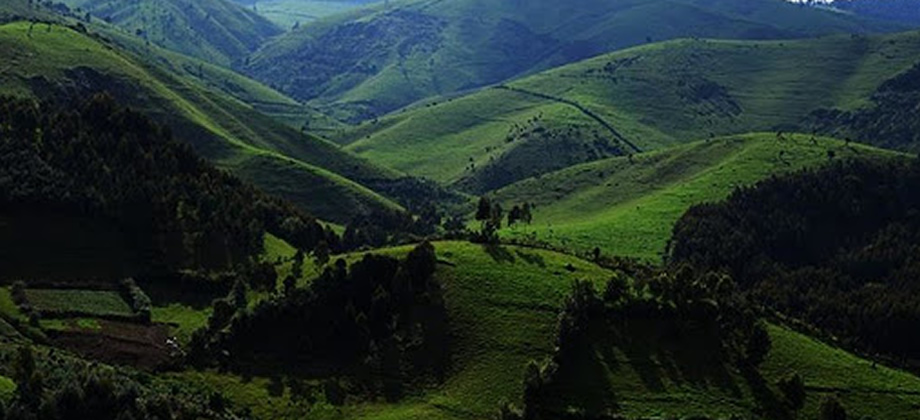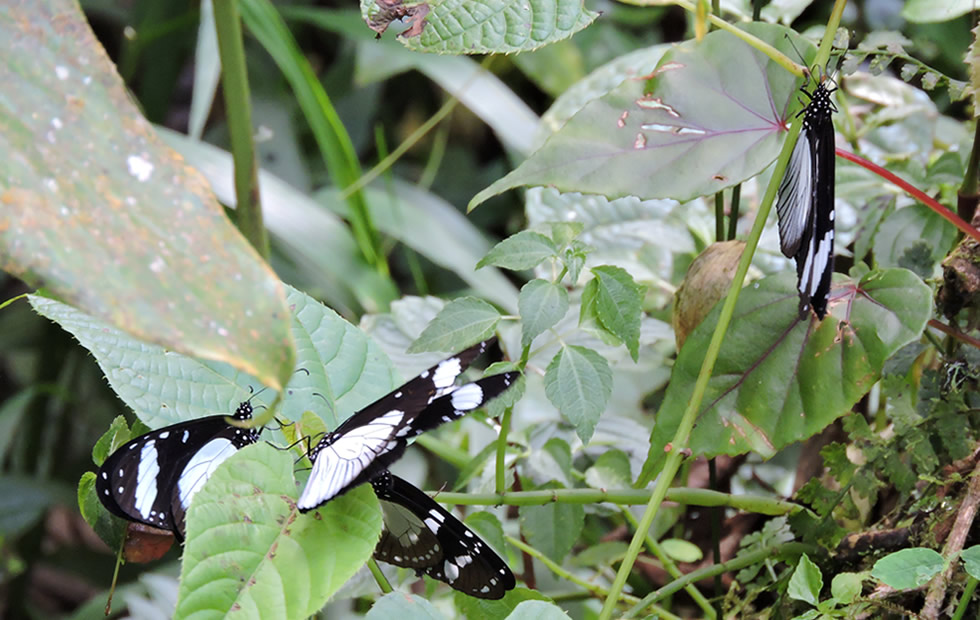Located in south-western Uganda at the junction of the plain and mountain forests, Bwindi National Park covers 33,000 hectares and is known for its exceptional biodiversity, with more than 200 species of trees, over 100 species of ferns, more than 350 birds and over 200 butterflies, as well as many endangered species, including the mountain gorilla. Here are some amazing facts about Bwindi Impenetrable Forest in South Western Uganda.
Location
Bwindi Impenetrable Forest National Park is situated in the misty valleys Kabale, Southwestern Uganda. It lies within the Albertine Rift and covers an area of 331 square kilometers.
Terrain
 Bwindi is mainly comprised of the montane and lowland forest and reachable on foot. The park lies between altitude 1160 and 2607 meters above sea level. It straddles within several steep slopes and valleys which make the Eastern edge of the Albertine Rift Valley. The park receives an average rainfall of about 1500mm and it is a major water catchment area, source of 5 main Rivers that flow into Lake Albert.
Bwindi is mainly comprised of the montane and lowland forest and reachable on foot. The park lies between altitude 1160 and 2607 meters above sea level. It straddles within several steep slopes and valleys which make the Eastern edge of the Albertine Rift Valley. The park receives an average rainfall of about 1500mm and it is a major water catchment area, source of 5 main Rivers that flow into Lake Albert.
Important UNESCO World Heritage Park in Africa
Bwindi Impenetrable Forest National Park is a UNESCO Heritage Site. In 1964, Bwindi was designated as an animal sanctuary mainly to offer protection to the critically endangered mountain gorillas and it was renamed Impenetrable Central Forest Reserve.
Great Diversity
Bwindi features 120 mammal species including forest elephants, 360 species of birds;-23 of them are endemic to the Albertine Rift, 14 not recorded anywhere else in Uganda including the white tailed blue flycatcher, Brown necked parrot and Fraser’s eagle owl, the African green broad bill; Cream banded swallowtail, 1000 flowering plants, 163 tree species and 104 fern species.
 It also offers refuge to 11 ape species including the wild chimpanzees, the rare mountain gorillas with about 400 individuals representing half of the world’s remaining gorillas, colobus monkeys, L’Hoests monkeys, Red tailed monkeys, vervet and many more. Bwindi Impenetrable Forest National Park is one of the only conservation areas in the world where chimpanzees and mountain gorillas share the same habitat.
It also offers refuge to 11 ape species including the wild chimpanzees, the rare mountain gorillas with about 400 individuals representing half of the world’s remaining gorillas, colobus monkeys, L’Hoests monkeys, Red tailed monkeys, vervet and many more. Bwindi Impenetrable Forest National Park is one of the only conservation areas in the world where chimpanzees and mountain gorillas share the same habitat.
Bwindi offers refuge to several butterflies about 200-eight (8) of which are endemic to the Albertine Rift, reptiles, giant frogs and moths.
Bwindi Impenetrable Forest National Park was designated as a national park in 1991 and in 1994, it was listed as UNESCO site due to its abundant ecological importance and a 10 kilometer area was added into the park. Bwindi is incomparably one of East Africa’s most exceptional protected areas and popular as one of Africa’s old habitats dating about 25000 years ago making it one of the biologically rich sites in Africa.
Great Tourism Destination
Bwindi is a great destination for primate safaris in Africa! Tourism in Bwindi Impenetrable Forest National Park primarily depends on mountain gorilla trekking which occurs within the four main sectors which include the Buhoma, Ruhija, Rushaga and Nkuringo sector. There are 19 habituated gorilla groups, 10 of which are set for gorilla tourism and one for research purposes in the park. They include Mubare, Rushegura, Bitukura, Habinyanja, Oruzogo, Nshongi, Nkuringo, Bweza, Mishaya, Kahungye, Busingye and the Kyaguriro for research. Gorilla trekking in Bwindi Impenetrable National Park started in 1993 making it the main tourist attraction in the park.
If you are planning for your safari to Bwindi Impenetrable National Park, make sure that you carry out adequate research on gorillas and their habituated groups. Besides gorilla trekking adventures, there is a newly introduced tourism product known as gorilla habituation experience which makes Bwindi the only tourist destination in the world with this unique adventure that offers visitors opportunity to spend all the four hours face to face with the apes in the wild.
Conservation Management of Bwindi
Until 1994, the management plan (Leggat et al, 1961) for Bwindi emphasized simultaneous preservation of forest cover with maximum sustainable timber production. Unfortunately, after 1971, Forest Department management structures collapsed, leading to massive illegal exploitation of the forest for timber, bushmeat, gold, building materials, cultivation and livestock grazing. Stabilization has now occurred following the establishment of the Impenetrable Forest Conservation Project in 1986, and other Forest Department and Wildlife Authority initiatives. In addition to law-enforcement, the main achievements to date are in species inventory and monitoring, research, staff training, and demarcation and securing of park boundaries. In combating the threat of agricultural encroachment, the Uganda Wildlife Authority is assisted by the CARE Development Through Conservation (DTC) and the Mgahinga and Bwindi Impenetrable Forest Conservation Trust (MBIFCT) project which has promoted good relations with the local community through a large-scale tree-nursery program. In addition to its out-forest work, DTC has also studied in-forest resource use and zoning strategy. A tourism plan has been in use since 1993 (IGCP, 1992). The People and Plants initiative of WWF and UNESCO has trained 13 Ugandans to MSc level in ethnobotany and an overall management plan has been jointly prepared by the Uganda Wildlife Authority, the Institute of Tropical Forest Conservation, CARE-DTC and local communities (A. Atucunda, in.litt. 2002).
Budget
20% of the Park’s income is used for management, 20% for research and 12% for community development, but owing to rebel incursions this income has diminished. Funds are short and staff numbers have recently been cut to permit realistic salaries to those who remain. IGCP has been funded variously by the WWF, FFI, the African Wildlife Fund and USAID and much of the funding has gone to pay the salaries of the rangers during the civil unrest. In the MBIFCT project the World Bank and GEF have also set aside funds for Bwindi.
